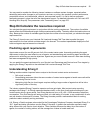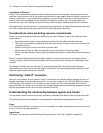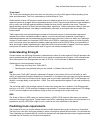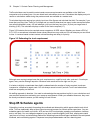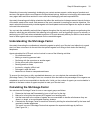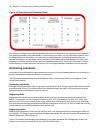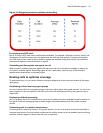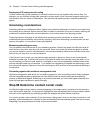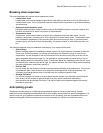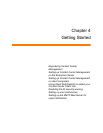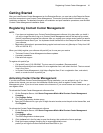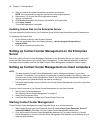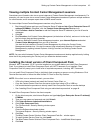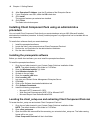Step #6 Determine contact center costs 37
Breaking down expenses
The costs associated with contact center operations include
• Loaded labor costs
Loaded labor costs include wages, fringe benefits, and facilities, and account for over 60 percent of
contact center costs. This is a significant cost and underlines the importance of accurate forecasting
and scheduling.
• Equipment and automation costs
Equipment and automation costs include the cost of the telephone system, computer systems, and
furniture, and account for about five percent of total expenses.
• Transmission costs
Transmission costs include costs incurred for voice (telephone lines) and data (email, fax, and
modem) transmission, and account for 25 to 30 percent of contact center costs. Transmission costs
have decreased considerably in the past few years and are continuing to drop. In revenue-based
contact centers, toll-free lines cost approximately 15 cents per minute, or nine dollars per hour, per
line.
The following statistics help you breakdown and analyze your contact center costs:
• Cost of Delay
When insufficient agents are available to handle a given Call Load, the delay increases as does the
Trunk Load. Calls are queued. For toll-free services each call delayed in queue is a cost to the
organization. You are charged for the toll-free service from the time a trunk picks up a call until an
agent completes the call and hangs up. The expense of queueing callers is known as the Cost of
Delay. Staffing affects toll-free service costs: if insufficient agents are available and the Service Level
is continually low, network costs will be high. You need to consider the Cost of Delay when estimating
the agent requirement, and closely monitor it.
• Cost per Call
You use a cost-per-call analysis to measure contact center profitability and performance. The cost per
call measures labor, communication, and equipment costs against the revenue generated. You
calculate it by dividing the total cost by the total calls for a particular period of time.
• Average Call Value
You use the Average Call Value in revenue-based contact centers. You calculate it by dividing the
total revenue by the number of calls received for a given period. Sales and reservations
environments use the Average Call Value. The value of each call is balanced against the service
provided to customers.
Anticipating growth
Predicting company growth is a challenging and essential aspect of contact center costing. Growth
predictions impact budgeting considerations and must be clearly communicated to senior management. It is
useful to map out your projected costs and time frames for the upcoming year and substantiate them with
statistics and graphs. Determine when and how many resources you require, and lead-time issues.



